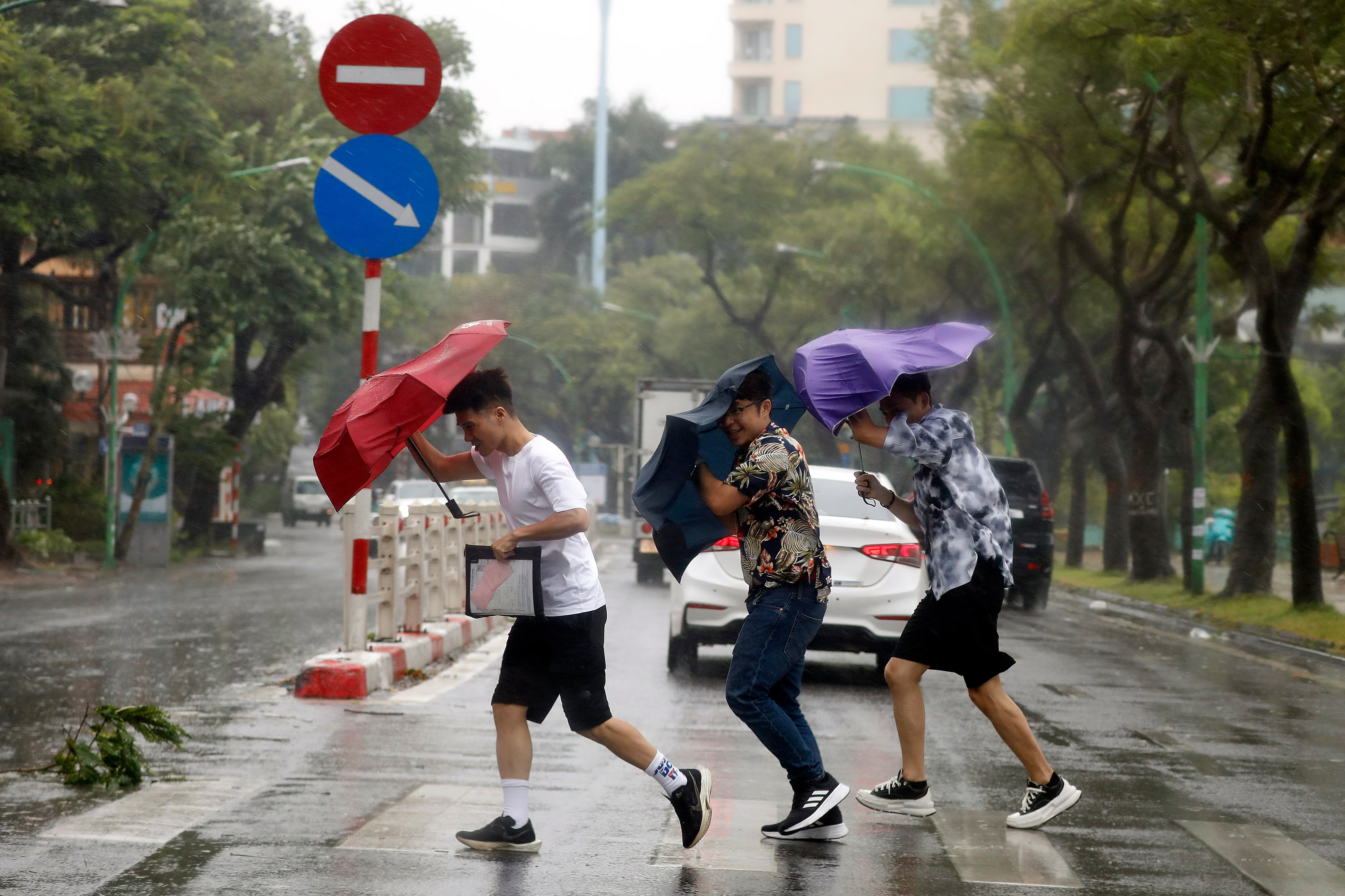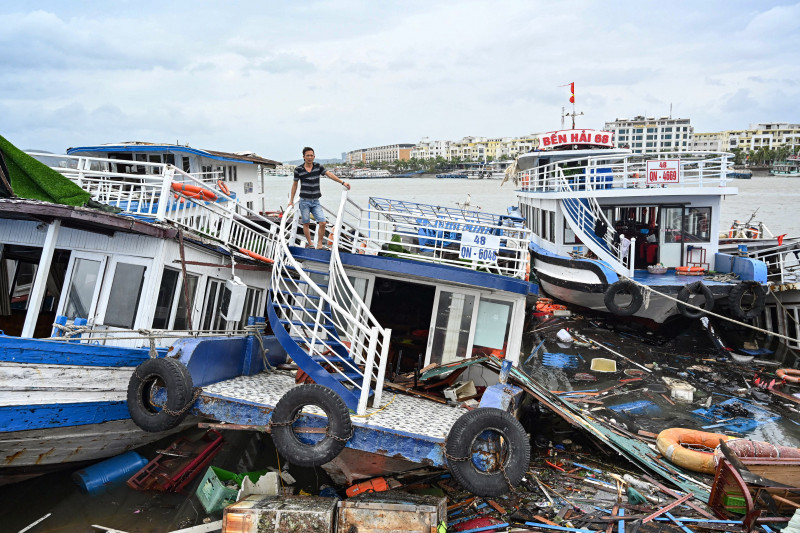Your support helps us to tell the story
Support NowAs your White House correspondent, I ask the tough questions and seek the answers that matter.
Your support enables me to be in the room, pressing for transparency and accountability. Without your contributions, we wouldn't have the resources to challenge those in power.
Your donation makes it possible for us to keep doing this important work, keeping you informed every step of the way to the November election

Andrew Feinberg
White House Correspondent
Typhoon Yagi, Asia’s most powerful storm this year, tore through northern Vietnam over the weekend, leaving at least 35 people dead and 24 others missing, the disaster management agency said on Monday.
The storm caused widespread destruction, triggering landslides and floods and injuring 299 people after it moved into Vietnam following its landfall in China and the Philippines.
Yagi made landfall on Vietnam’s northeastern coast on Saturday, bringing torrential rains and strong winds that disrupted power and telecommunications, particularly in Quang Ninh and Haiphong provinces.
The mountainous province of Lao Cai suffered the most casualties with 13 people dead in landslides and one in a flash flood.
Rainfall levels ranged from 208mm to 433mm (8.2 to 17.1 inches) in various parts of the affected region, according to the National Centre for Hydro-Meteorological Forecasting.
Yagi weakened to a tropical depression on Sunday but was expected to lash Vietnam with more rain. In a warning on Monday, the weather agency predicted further flooding and landslides, with heightened risks in northern provinces like Lang Son, Cao Bang, Yen Bai, and Thai Nguyen.
“Floods and landslides are damaging the environment and threatening people’s lives,” the centre said in a statement.

Among the casualties was a family of four, killed when heavy rain triggered a hillside collapse onto their home in the mountainous Hoa Binh province.
Six people, including a newborn baby and a one year old, died in a landslide in the Hoang Lien Son mountains.
“We found the six bodies, including a one-year-old boy and a newborn, in the landslide,” a local official from the Sapa people’s committee, who asked not to be named, told Agence France-Presse.
“The rain was heavy, weakening the soil and triggering [the] landslide.”

Other fatalities occurred in storm-related incidents, with people being crushed by falling trees or swept away by drifting boats, the defense ministry’s disaster management agency reported.
In the sea, 30 vessels sank amid violent winds and waves at boat lock areas in Quang Ninh province along Ha Long Bay, a UNESCO World Heritage site.
On land, nearly 3,300 homes and over 120,000 hectares of crops were damaged.
In addition to the human toll, local fishers were left surveying severe damage to their boats and equipment in the wake of the storm.
Before hitting Vietnam, Yagi also ravaged parts of southern China and the Philippines. It left at least 24 people dead and dozens more injured in the Philippines.
It also led to evacuation of over 400,000 people in Hainan.
Experts have noted a concerning trend in the behavior of typhoons in the region, with storms now forming closer to the coast, intensifying more rapidly, and lingering over land for longer periods due to the effects of climate change. A recent study, published in July, warns of increasing risks as climate patterns continue to evolve.
Disclaimer: The copyright of this article belongs to the original author. Reposting this article is solely for the purpose of information dissemination and does not constitute any investment advice. If there is any infringement, please contact us immediately. We will make corrections or deletions as necessary. Thank you.



